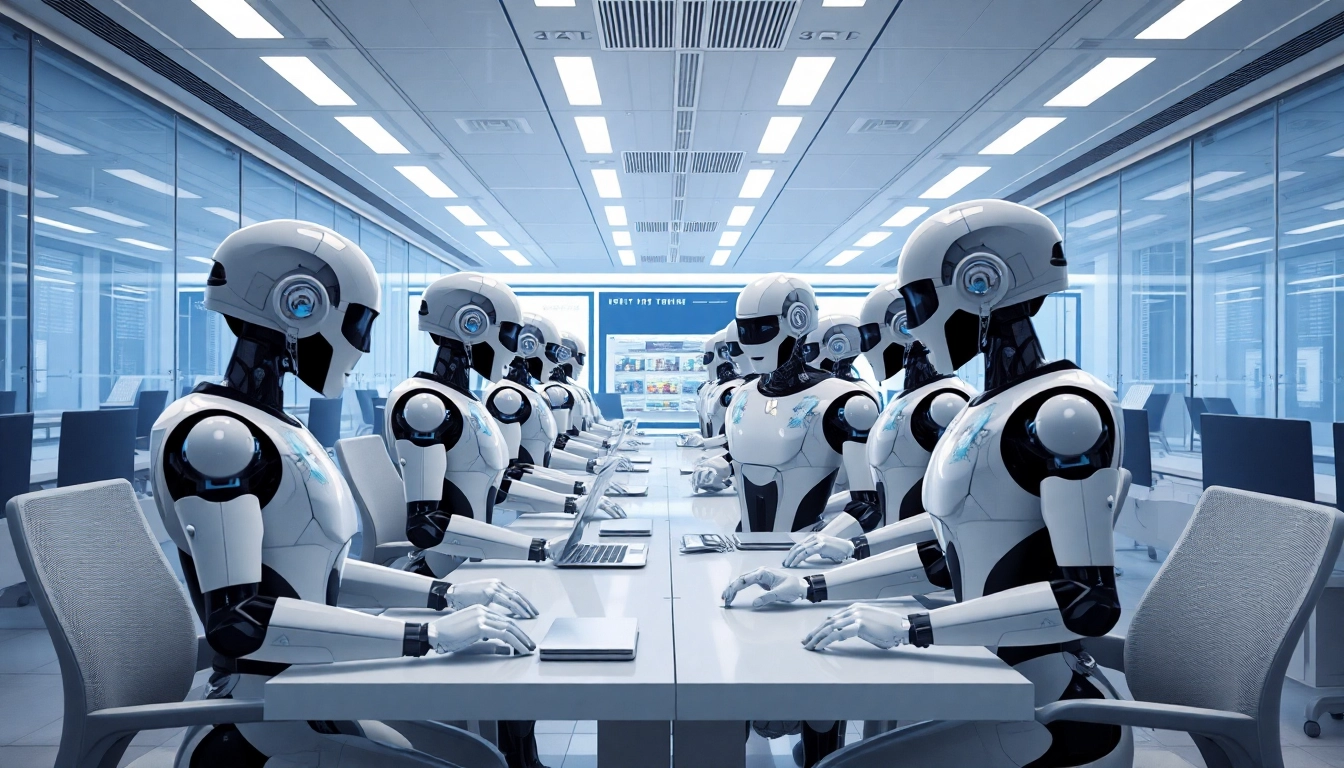Understanding Agentic Human AI
What is Agentic Human AI?
Agentic Human AI refers to advanced artificial intelligence systems capable of acting autonomously to achieve specified goals without requiring constant human intervention. Unlike traditional AI, which often relies on pre-defined rules and human feedback, Agentic Human AI utilizes complex algorithms to make independent decisions. This capability opens up a realm of possibilities in various sectors, allowing for more efficient processes and innovative solutions across industries. Through the integration of Agentic Human AI, businesses can enhance their operations, reduce human error, and achieve greater productivity.
The Technology Behind Agentic AI
At the core of Agentic Human AI are several key technologies, including machine learning, natural language processing, and probabilistic reasoning. These systems analyze vast amounts of data, recognize patterns, and adapt to changing environments. Machine learning enables AI to improve over time, learning from past experiences and adjusting its actions accordingly. Natural language processing allows for better communication between AI systems and human users, enhancing user experience. Furthermore, a significant component of Agentic AI is its ability to engage in complex reasoning and decision-making processes autonomously, which relies on advanced algorithms that evaluate multiple factors quickly and efficiently.
Key Benefits of Agentic Human AI
The implementation of Agentic Human AI brings numerous benefits, including:
- Increased Efficiency: By automating routine tasks and decision-making, businesses can redirect their human resources toward more strategic activities that require human intuition and creativity.
- Cost Reduction: Reduced operational costs are achieved through decreased labor costs and increased efficiencies. Companies can complete projects faster and with fewer errors.
- Data-Driven Insights: Agentic AI systems can analyze data trends and offer predictive insights, helping organizations to make informed strategic decisions.
- Enhanced Collaboration: AI systems can work alongside human teams, supplementing their capabilities and augmenting their productivity.
Applications of Agentic Human AI in Business
Autonomous Decision-Making Processes
One of the most transformative applications of Agentic Human AI is in autonomous decision-making. For example, financial institutions have begun employing Agentic AI to analyze market fluctuations and make trades in real-time without human intervention. This autonomy allows organizations to capitalize on opportunities and mitigate risks more effectively than ever before.
Enhancing Human Collaboration with AI
Agentic Human AI not only operates independently but also enhances collaboration between humans and machines. For instance, in healthcare, AI systems can assist doctors by analyzing medical histories and offering treatment suggestions, allowing healthcare professionals to make better-informed decisions. This symbiotic relationship leads to improved patient outcomes and streamlined operations.
Case Studies: Success Stories
Many organizations have reported success stories related to the integration of Agentic Human AI. One notable case is a major e-commerce platform that utilized Agentic AI to optimize its supply chain management. By analyzing demand patterns and inventory levels, the AI system was able to automate restocking processes, reducing lead times and lowering costs. Customers experienced faster delivery times, and the organization reported a significant increase in customer satisfaction and sales.
Challenges and Risks of Implementing Agentic AI
Ethical Considerations
The rapid adoption of Agentic Human AI raises several ethical questions. Concerns regarding decision-making accountability, potential biases in AI algorithms, and the implications of autonomous actions are prevalent. As businesses integrate AI systems, they must ensure fairness, transparency, and accountability in their operations, implementing practices to audit AI decisions and mitigate biases.
Data Privacy and Security Concerns
As AI systems become more autonomous, they require access to vast amounts of data, raising significant privacy and security concerns. Organizations must prioritize data protection strategies and comply with regulations, such as GDPR, to safeguard sensitive information. This focus on security helps foster trust with users and customers, enhancing the long-term viability of AI solutions.
Potential for Job Displacement
While Agentic Human AI can enhance productivity, it may also lead to job displacement in certain sectors. Employees may be concerned about the potential for losing their jobs to automation. To address this challenge, companies should focus on re-skilling and up-skilling their workforce, preparing employees to work alongside AI systems and embrace new roles that AI will create.
Best Practices for Integrating Agentic Human AI
Steps for Implementation
Successful integration of Agentic Human AI involves several steps:
- Assessment: Evaluate your organization’s current capabilities and determine how Agentic AI can address specific needs.
- Strategic Planning: Develop a systematic approach for implementation, including setting specific goals and outcomes.
- Data Preparation: Ensure that your organization has access to high-quality data for training AI models.
- Collaborate with Experts: Engage with AI specialists and consultants to navigate complexities during integration.
- Pilot Projects: Begin with small-scale pilot projects to test and iterate before full-scale implementation.
Employee Training and Adaptation
To fully realize the benefits of Agentic Human AI, businesses must invest in employee training programs. Developing a culture that embraces change and innovation is crucial. Training should focus on building familiarity with AI systems, encouraging employees to harness AI as a tool rather than viewing it as a replacement. This investment not only empowers employees but fosters an environment conducive to collaboration between humans and AI.
Measuring Success: KPIs for Agentic AI
Measuring the success of Agentic Human AI implementations is essential for continuous improvement. Key Performance Indicators (KPIs) should be established, including:
- Productivity Metrics: Assessing the efficiency gains achieved through automation.
- Cost Impact: Evaluating the return on investment (ROI) from implementing AI solutions.
- User Satisfaction: Surveying employee and customer satisfaction levels to gauge the effectiveness of AI integration.
- Accuracy of Decisions: Monitoring the accuracy and reliability of outcomes generated by AI systems.
The Future of Work with Agentic Human AI
Trends and Innovations to Watch
Looking ahead, several trends in Agentic Human AI promise to reshape the future of work. The rise of multi-agent systems, where different AI agents collaborate to solve complex problems, represents a pivotal innovation. Additionally, advancements in explainable AI will enhance transparency, allowing users to understand the reasoning behind AI decisions and fostering greater trust in technology.
The Role of Humans in an AI-Driven Workplace
In an AI-driven workplace, the role of humans will evolve rather than diminish. Humans will be essential for tasks requiring emotional intelligence, creativity, and complex problem-solving. The collaboration between humans and AI will enable organizations to become more agile, allowing them to respond rapidly to changing market conditions and consumer needs.
Preparing for the AI-Powered Future
Preparing for an AI-powered future involves investing in technology, training, and strategies that align with the AI landscape. Organizations must cultivate a culture of continuous learning, encouraging employees to adapt to rapidly changing technologies. Building robust partnerships with AI providers and promoting innovation within teams will ensure that businesses are well-equipped to thrive in the age of Agentic Human AI.









